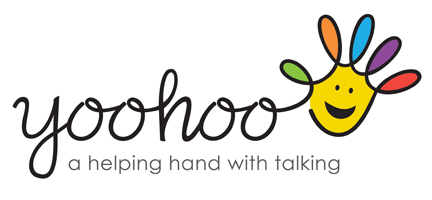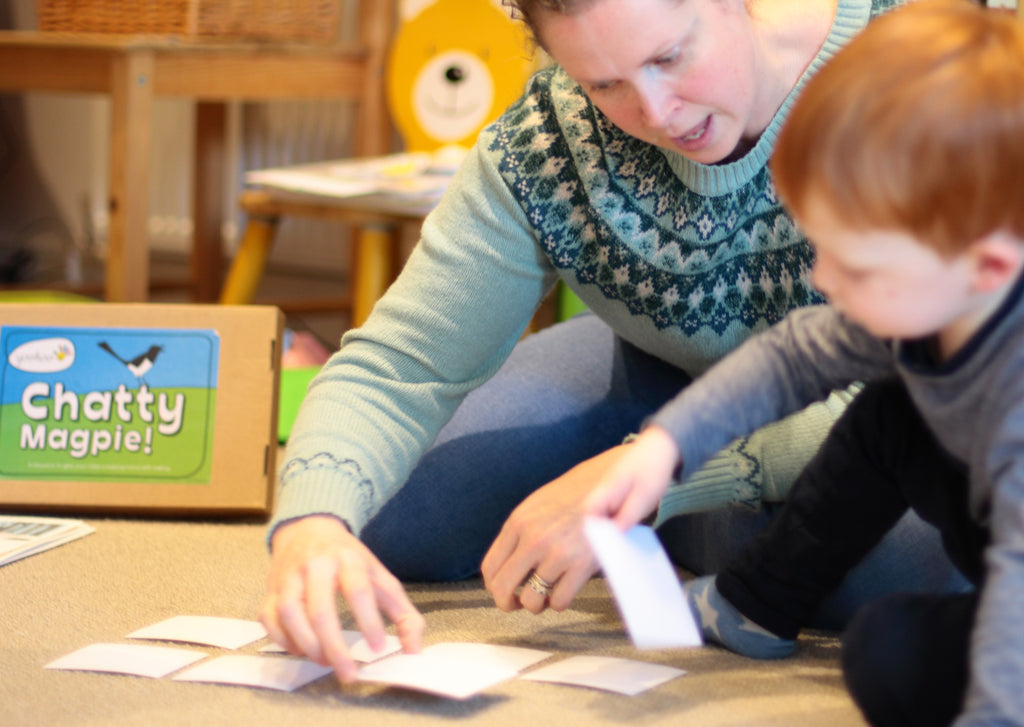I absolutely love my Chatty Magpie. It is an essential part of my therapy toolkit. I can see the difference this great resource makes every day, yet my opinion could be deemed subjective. Luckily, the impact of its usage with Year R students has been documented by a school in Tonbridge. Now in its second year, quantitative data analysis has, yet again, identified consistent progress with their students.
Three Chatty Magpie boxes have been designed to help support children with:
Difficulties making key speech sounds (for example, /k/ goes to /t/, /s/ to /d/, /f/ to /b/ etc)
Reduced understanding and use of vocabulary
Poor memory skills – processing and remembering
If you feel that your child has challenges with any of these, then a Chatty Magpie could be just what you need.
Tip 1: Try and find a lovely place where you can use your Chatty Magpie. I often play on the floor or at a table. Where possible, and I appreciate home life is busy, try to limit background noise or distractions as much as possible. For example, try not to have the washing machine, radio, TV on.
Tip 2: Read through all activity cards within the Chatty Magpie and familiarise yourself with how to play them. You may wish to have a little practise first. I have found that instead of using a tray and cover as suggested, I use the box lid and the bag provided. These work brilliantly.
Tip 3: Find appropriate objects/items to go in your Chatty Magpie.
If working on speech these will need to include the speech sounds they find difficult. For example, if the sound /k/ is going to /t/, then you will need to find about 10 items that have the sound /k/ in them (ideally at the beginning. For example, cow, car, key, cone, cat, can, cup, cap, card, cot). For tips on how to trigger speech sounds please see my Blog.
If working on vocabulary select objects that they find tricky to name or understand. You could group these by category, for example, animals, every day objects, food, colours, clothes, tools, minibeasts, weather, musical instruments, people who help us, family members etc.
If working on memory you can chose any items that will motivate and interest your child. I have used, over the years, Paw Patrol characters, toy planes, Disney princesses, animals, collector rubbers etc.
Tip 4: Once ready only complete 1 or 2 activities at a time. The activities are meant to be fun and engaging. The learning aspect, especially with regards speech production and vocabulary, is intended to be hidden within the activity.
Tip 5: Use proactive praise throughout. Children can be aware when they are not getting things quite right so being told that they are doing a “Great job” or “Good work” can be confusing. Use phrases like “Nearly, good try”. “That’s it, almost got it”.
Tip 6: Reverse roles so that your child can be the ‘adult’. This is always fun and if you can, make a few mistakes so that your child can see that this is okay.
Tip 7: Vary the objects/items when you can. Often, I will keep objects/items in the Chatty Magpie until they can be named accurately. However, if it is proving difficult to say or name an object/item I would take it out for a while to be returned later.
Tip 8: Take the Chatty Magpie with you to play with grandparents or other family members. You could even take it to their nursery, early years provider or school. Allowing your child to practise their skills with others can help with generalisation.
Tip 9: Be experimental. Chatty Magpie comes with 10 activities but do not feel that you are confined to these. They offer you a starting point. Where you take your child’s learning, is up to you. Here are some examples:
Supporting your child with pronouns (e.g. she, he, his, her, him) you could add in a boy and girl doll to your other food objects and play picnic. “Give her the apple” Give him the banana” or “She would like a drink” “He likes grapes” etc.
Helping your child understand and follow directional language. Place the objects for your Chatty Magpie on a surface or in the box lid. Get two of your child’s favourite toys [e.g. teddy and rabbit]. Give your child little instructions to follow. Starting point – Give the cup to teddy (only have one toy present). Step up – Give the cup to teddy (have both toys available) Next step - Give the cup and plate to teddy. More complex – Give the cup to teddy and the fork to rabbit.
Another activity idea - Beat the fidget spinner. Lay all the items that have been put in the Chatty Magpie into the box lid. Ask your child to spin a fidget spinner (giving help if needed) and then get them to name as many of the items before the fidget spinner stops. Take named items out so that you can count how well they did at the end.
Tip 10: Have fun. If your child sees you fully engaged and having fun, they will want to as well. The children I work with love the three-cup activity (or as I call it the ‘Magic Cups’). They find it truly hilarious when I cannot find the object/item, but they can.
I hope that you have found this useful.


Leave a comment